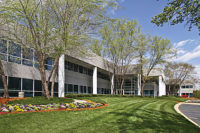"We will see a dramatic increase in the very near future in the green design strategies architects use to design buildings," said Phil Bernstein, FAIA, LEED® AP, vice president of Autodesk Building Solutions Division. "Architects and designers will need to be increasingly familiar with materials research, energy and atmosphere management alternatives, and design software tools that facilitate these new green designs practices using building information models."
Incorporating high-efficiency HVAC systems was found to be the most common element of green building design today, with greater than 50% of the study's architects specifying their use on more than half of their projects over the past year. Sixty-seven percent of the architects responding to the survey used design software to maximize solar lighting, and approximately 64% used retention basins. More than half of architects used design software to predict and evaluate HVAC operating costs in the past year, with one third of these architects using this software on more than half of their projects.
This Internet survey, which was conducted in October 2005 among architects practicing in the U.S., is available at www.autodesk.com.




